What If I Don't Want To Wear White On My Wedding Day?
On modern wedding conventions and the courage required to be yourself
I’ll just be blunt — a lot about the modern American wedding makes me want to crawl out of my skin. What was once considered a spiritual sacrament has been twisted into a show of ego. Modern weddings are now a celebration of the participants unique special snowflake-ness rather than the blessing of a spiritual union.
I’m planning my own wedding right now, and it’s forcing me to confront how my Orthodox Christian worldview clashes with Anglo-Saxon Protestant culture, secular American culture, and long-standing wedding traditions — many of which, come to find out, are rooted in Ancient Rome and the Middle Ages.
There’s a lot about mainstream weddings I simply don’t desire for my own wedding. The corny professional engagement photos. The bridal shower, where guests sit in an event hall to watch you, a grown adult, open packs of silverware on a 75 degree day. The bachelorette party, which costs the guests hundreds of dollars. The $3,000+ wedding dress (being modest here). The $10,000+ venue. The awkwardly-paired wedding party. Smashing cake in each other’s faces. The parental dances, which feel like an intrusion on what ought to be a more private moment.
I have never really cared for overly-programmed events in any form, but modern weddings are so programmed and scheduled and cookie-cutter, I’m afraid they end up feeling contrived, arrogant, and impersonal.
Why do people do what they do for their weddings? Where do these ideas come from? I researched the origins of the most mainstream traditions:
Don’t See The Bride Before The Ceremony
Today, we’re told this is for good luck, but the tradition originates in the Middle Ages when marriages were arranged. A father who was offering his daughter to a more well-off family wanted to keep her unseen until her wedding day to prevent the groom from backing out if he didn’t find her attractive or the marriage advantageous. Brutal.
Wedding/Bridal Party
This one really surprised me — a Google search will tell you a wedding party is to “support the bride and groom,” but the actual tradition of the wedding party is rooted in Ancient Roman superstitions. The wedding party's role was to “protect” the bride and groom from evil spirits or jealous guests, so they dressed identical to the bride and groom to confuse anyone looking to harm them.
Garter Belt
This one had me flabbergasted — the garter belt tradition comes from the Middle Ages, in which wedding guests would follow the newlyweds to their bedroom to watch them consummate their marriage (!). It was considered “good luck” to take home a piece of the bride's clothing.
Bachelorette Party
Throwing a party to honor the bride-to-be goes back informally for a few centuries, but the modern, raunchy bachelorette party with phallic-shaped lollipops and “same penis forever” banners were influenced by the women's sexual liberation movement of the 1960s. A bachelorette party can be fashioned to the bride’s taste, but they’re almost always a really expensive ask (friends are expected to pay for their own travel, hotel / Airbnb, along with all the bride’s food, drinks, and event tickets for the weekend).
White Wedding Dresses
White wedding dresses are not a very long-standing tradition. They were popularized by Queen Victoria’s marriage to Prince Albert in 1840. White was hard to keep clean and therefore a sign of great wealth. Only the rich could afford to have their clothes cleaned, or to not wear a dress more than once. The average person didn’t start bathing regularly until the early 20th century, so it’s not hard to believe that before Queen Victoria’s marriage, brides wore a variety of colors for their weddings. Poorer brides often wore brown because it was hard to see dirt. The notion that a white wedding dress symbolizes a bride’s “purity” was applied after Queen Victoria’s trend.
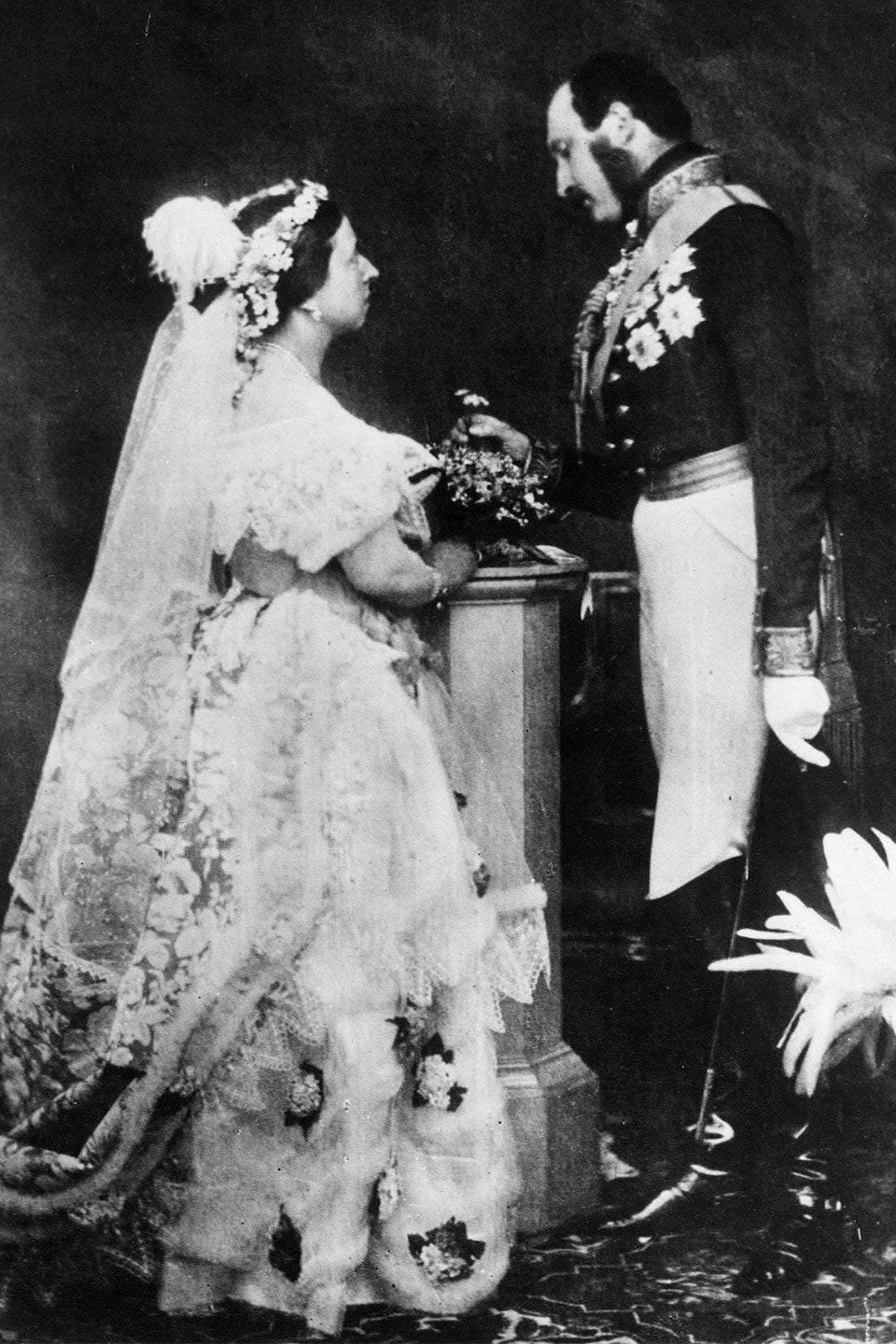
As it turns out, much of modern wedding traditions are cultural customs — not Orthodox church doctrine. I understand that people need cultural customs. They streamline decision-making, save time, and create social unity. Customs help people avoid making a socially ungraceful move. But I enjoy questioning where cultural customs come from, and asking if they’re still doing what they are supposed to do — transmit wisdom and values across generations to ultimately shape our society’s character.
Why I Don’t Want To Wear White
I started this exploration of wedding traditions because I wasn’t excited about wearing white. I stayed up until 1:00 AM many nights this month looking for a white dress online, and I just…didn’t like any of them. They all looked the same — tacky or too princess-y. Forgettable. Banal. I ordered a home try-on dress from JJ’s House and felt so ridiculous and unlike myself in it that I laughed and immediately sent it back. I don’t wear a lot of white, and if I had to pick a dress for an special occasion, it’s just not what I’d go for. If I wanted to spend $2,000+, maybe I could find a white dress I really liked. But I’m not from a rich family, and I haven’t mentally adjusted to being more well off in adulthood, so spending that much money feels irresponsible. Annoyingly, I found I felt more excited about a deep royal purple dress I found.
I’m an artist and I’m passionate about color. I study it, I buy books about it. I once paid a professional artist $300 to spend an afternoon teaching me about color mixing. I watch YouTube videos about dressing to flatter your season, and then force the information upon my loved ones so they, too, can be “color-maxxed!” I ramble to anyone who will listen about how color is more than the flat color wheel from elementary school art class, but multi-dimensional — not just hue, but also chroma (saturation) and value (lightness or darkness).
Non-white wedding dresses are arguably more traditional, since the white wedding dress trend only began in 1840. But who cares when it started? It’s the ingrained custom now, and a woman holding flowers in a white dress next to a man in a tux very clearly communicates “bride.” Not wearing white may put me in an awkward position socially. People have expectations for a wedding, and you have to have a certain personality to pull off shirking a cultural custom. And I’m not Dita Von Teese or Gwen Stefani.
On the other hand — if there’s anything you can guarantee about your wedding day, it’s that you will be whispered about and judged no matter what you choose to do or not do. People are not going to like or understand the Orthodox church ceremony. They’re not going to like that we’re serving heavy appetizers to save money on a formal dinner. They’re going to have comments about everything I choose to do, and I am not getting married to appease other people’s preferences.
I wanted to know the philosophy of brides who didn’t wear white. Did they know about Queen Victoria’s trend? How much thought did they give it? There aren’t a lot of interviews asking for their thoughts, but I did find some fun examples of famous and “normal” brides who didn’t wear white:



I realize that wearing a white dress helps guests identify the bride. But if you don’t know who I am at my own wedding…I’m not sure that is my problem! I am also an identical twin, so I’m used to be unknown or confused with another. Sure, a white dress would differentiate the two of us on my wedding day, but I long ago received a clear download from God that said, “It is not your responsibility to help people tell you and Julie apart.” I took that to mean it’s God’s responsibility. There’s a real mystery to who can tell me and my twin apart — maybe it’s just people who can see beyond the material. I no longer waste my time trying to create differentiators to help other people out. If you know, you know.
Really, the embarrassing truth is — I’ve been obsessed with purple my whole life. My favorite stuffed animal as a child was aptly named “Purple Bunny” (by my dad, who was trying to teach us colors). A fluffy lavender bunny rabbit with a pink and white spotted bow tie, I loved this thing so much that when I was 2 years old, I forgot it at my Pappy’s house and cried and refused to sleep with another stuffed animal until he drove 8 miles to hand me the bunny, after which I laid down and fell right to sleep.

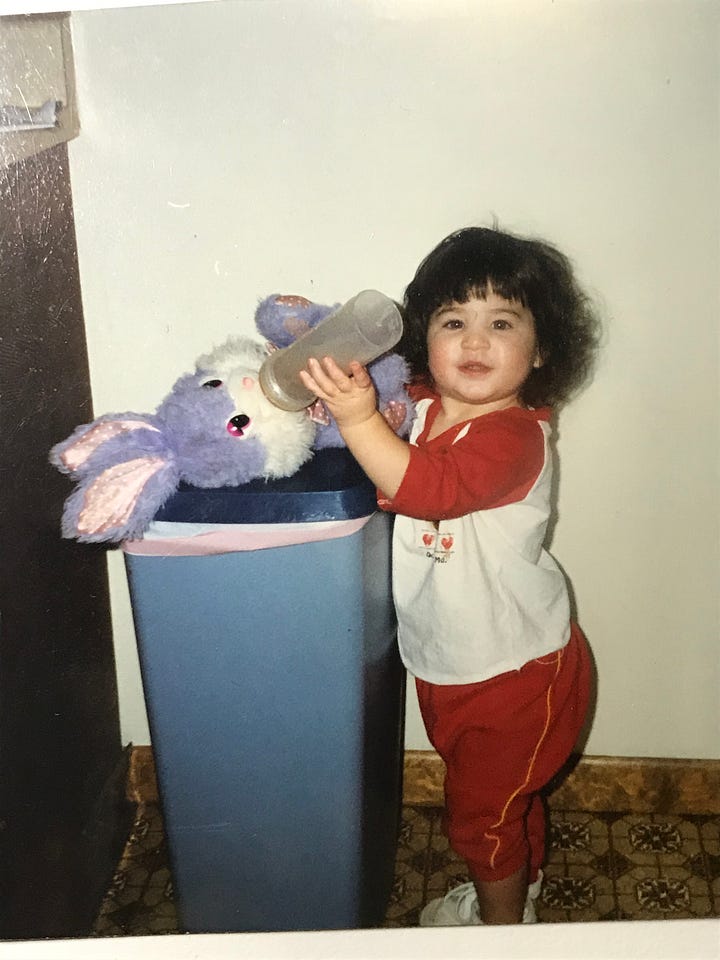
I like purple’s history and symbolism. Purple was an extremely rare color in the ancient world — it came from sea snails in the Mediterranean, and the dye was laborious to cultivate. It took 10,000 snails to create 1 gram of purple dye. It was more expensive than gold. Today, it symbolizes royalty, mysticism, and spirituality.
But besides any justification I can come up with — I just freaking like purple a lot. It makes me feel good. Given there’s no Orthodox church rule for my dress color, can’t that be enough of a reason for me?
In the Orthodox church, marriage is viewed as a great mystery and a divinely ordained union — not a contract, not an agreement. The couple does not face each other, and they do not recite vows. God is both the author of the marriage and a celebrant of it. The couple faces the altar and receives a blessing in the presence of God and the church.
My favorite part of the Orthodox marriage ceremony is when the priest places crowns on the heads of the couple to symbolize their new status as "king and queen” of their home, which is to be a “little church.” This is the opposite of ego — the bride and groom are considered martyrs to each other, mutually sacrificing themselves for the other. In marriage, they will set themselves aside and yield to the other.

One of the best weddings I’ve seen was a friend from college’s, who got married in her grandmother-in-law’s backyard in Phoenix, Arizona. She wore a bluish tank top and a big white tulle skirt from Etsy, her friend baked a cake covered in desert succulents, and she asked my twin sister and I to fire dance for everyone after dark. Her little sister, a visual artist, spray painted a mural on the door of the shed to honor the couple. It all felt like *her.* It was affordable, DIY, hands-on, and authentic.
I want to be authentic, and being authentic means honoring what’s on your heart, even when it goes against social conventions, which may or may not have a good basis, anyway. Perhaps what is different about you is ultimately what people will relate to.
I wonder if people curate the same style wedding because they genuinely like all the customs, or if they are just too afraid of being judged or receiving comments if they don’t follow them. I bet most don’t think about these customs at all. I don’t blame them. A wedding is a lot of attention and a lot of decision-making, and I can imagine you want to be as normal as possible with that much attention pointed your way. I’m already hearing negative comments about some of my decisions (one guest on the amount of incense in Orthodox churches — “I guess I’ll bring a gas mask”). It takes a lot of courage to look inside yourself, ask your nous/heart what you really feel, and honor the answer you receive. It’s scary.
I know people are going to whisper if I walk down the aisle in a floaty, royal purple chiffon gown. But I’m an artist, identical twin, and an Orthodox Christian — I’m already unconventional, with or without the purple dress.





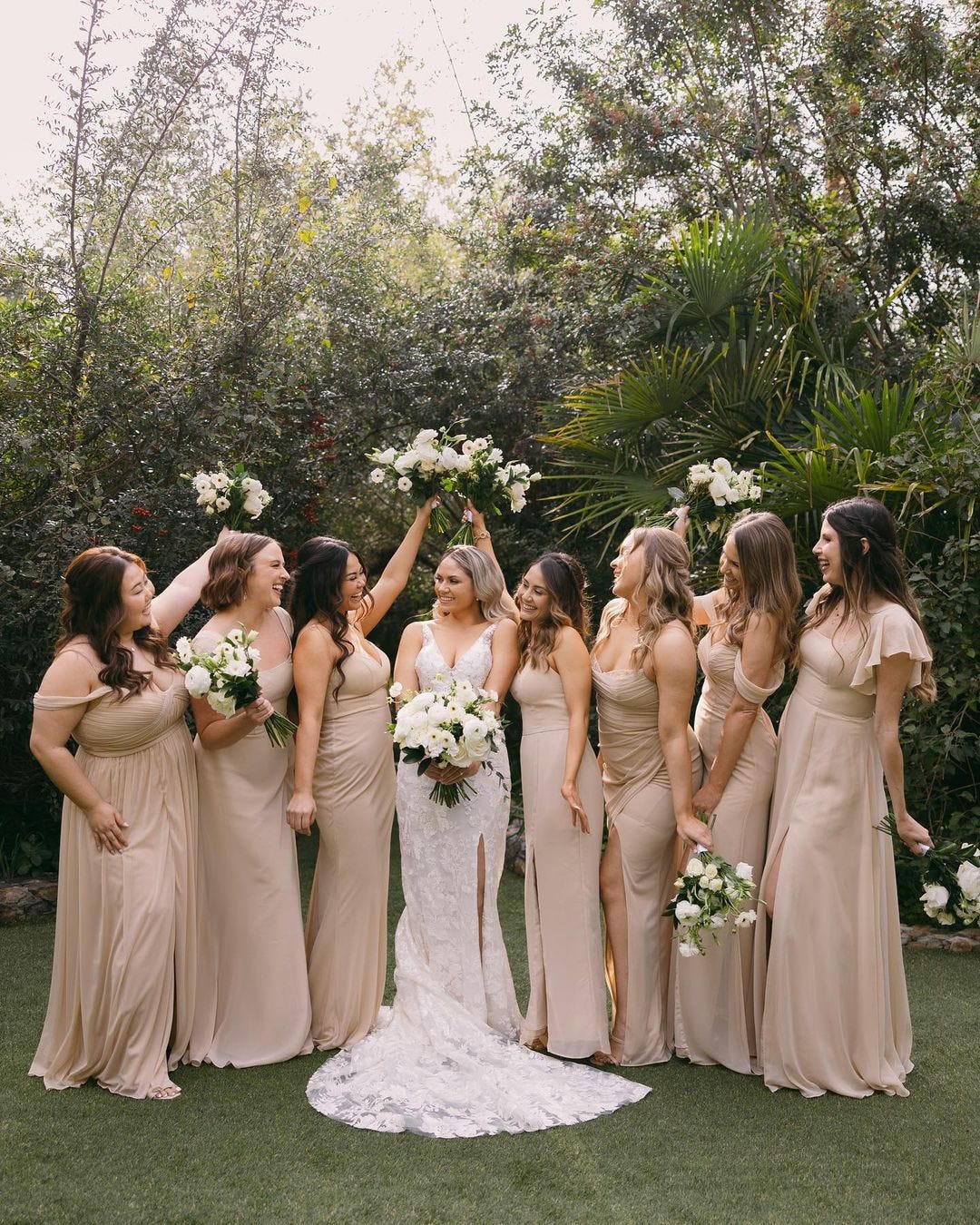

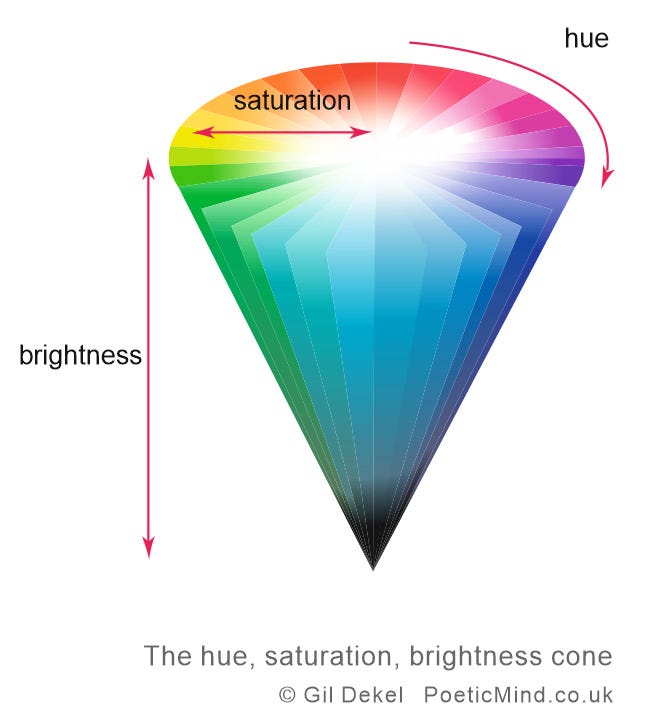
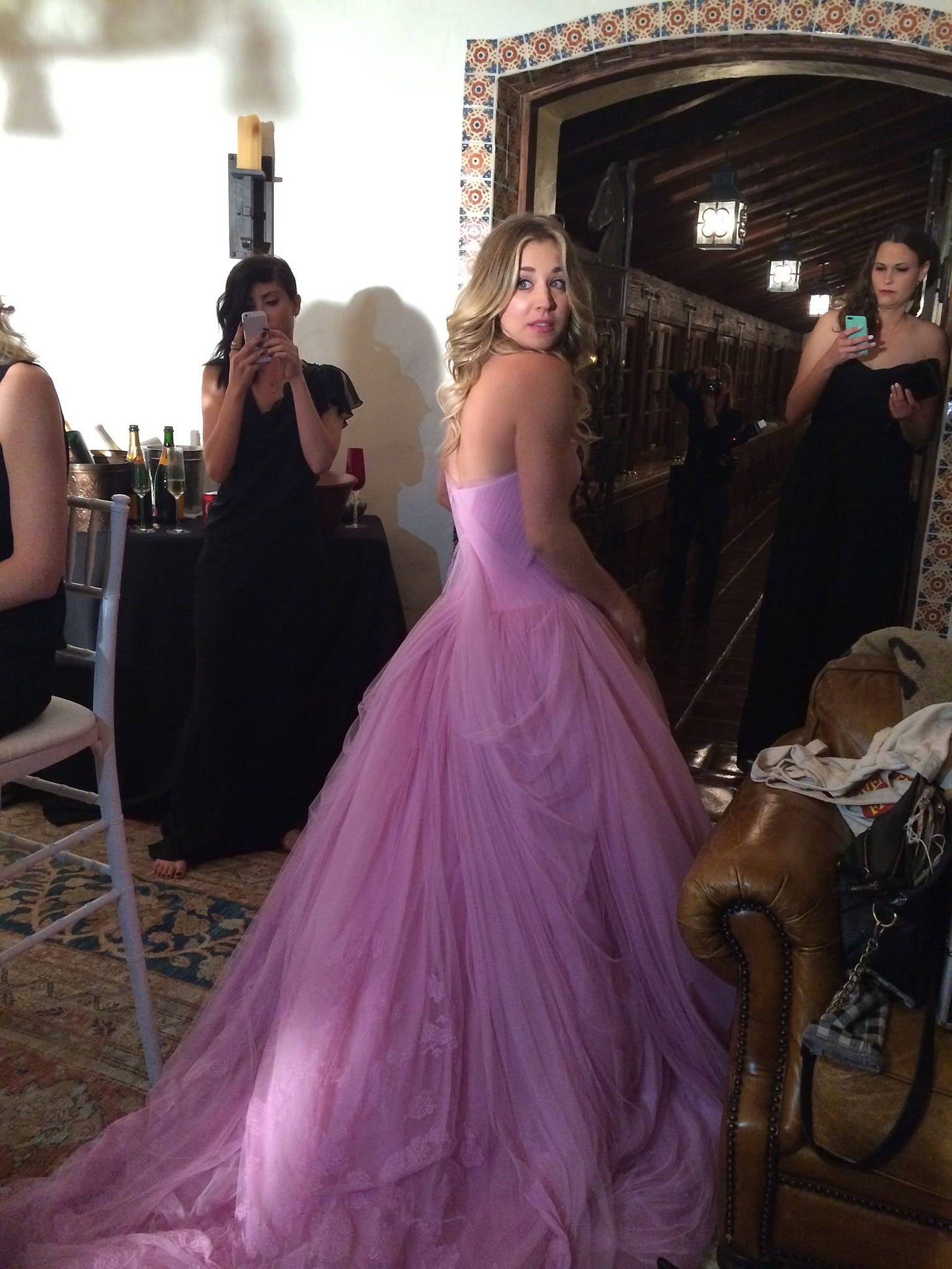


Marriage is about the sacrament — the dying to oneself and serving the other, planning the future together, working together, creating Oneness and stewarding a family. It isn’t about white dresses, bachelorette trips and smashing cake. And yes, if people can’t tell us apart, that’s their problem 😆 Love this piece!!
While my dress was white, it had pastel flowers embroidered all over it. I was lucky enough to buy it for cheap off the rack. It was SO me, and I would have been sad without color. I'm an artist too. I get it. It sounds to me that a purple dress is super fitting for you!
I appreciate your sharing about the Orthodox custom of the crowns. I began to research a few days ago to prepare to write an icon of the Wedding at Cana, and I noticed many had the couple crowned -- but I was unfamiliar with the custom. (I'm Roman Catholic.) Thanks for the insight!